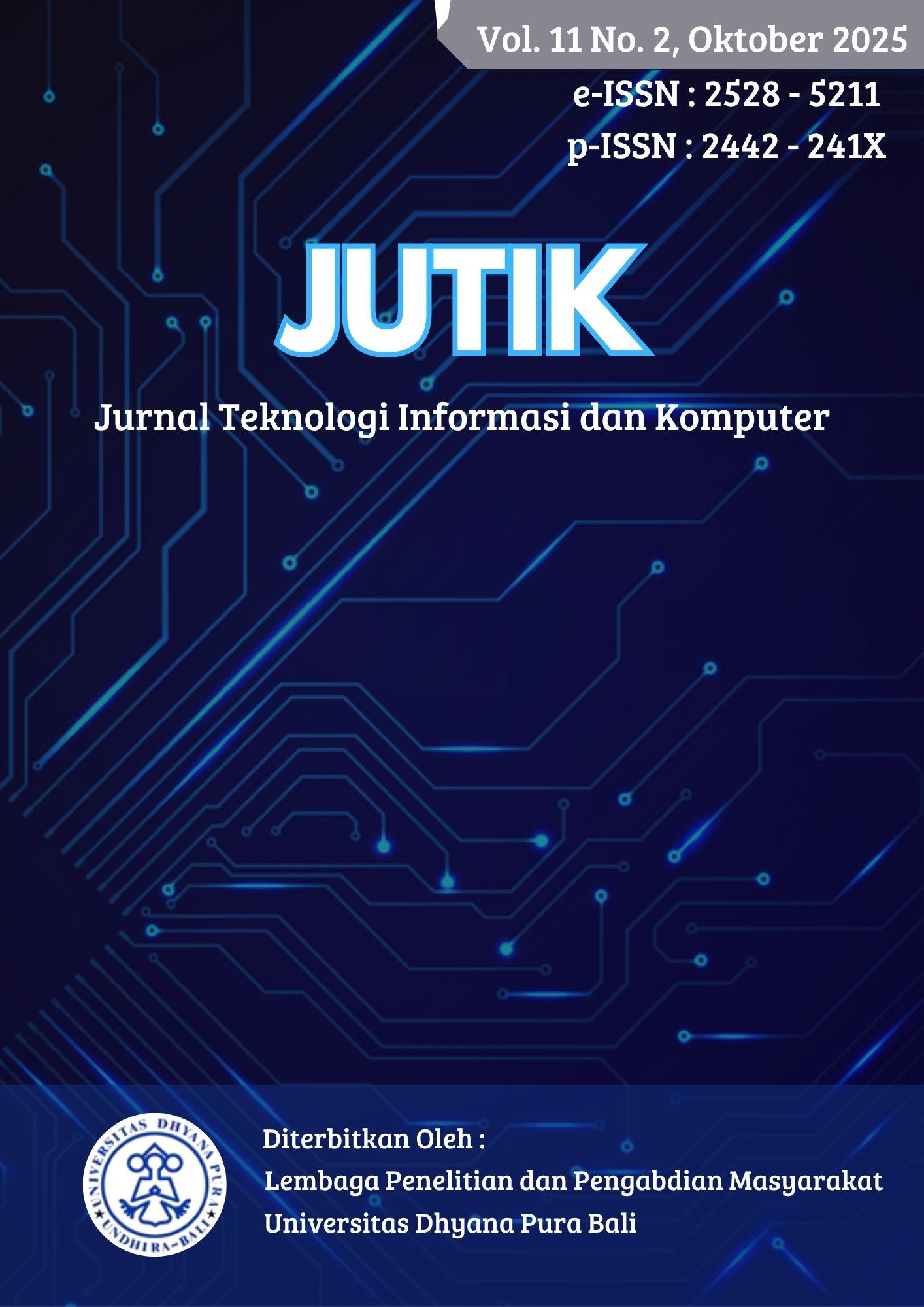SIMULASI SERANGAN SIBER MAC ADDRESS DAN IP ADDRESS SPOOFING PADA JARINGAN HTTP DI KALI LINUX
DOI:
https://doi.org/10.36002/jutik.v11i2.3766Keywords:
ARP Spoofing, HTTP, Kali Linux, MAC Address Spoofing, Network SecurityAbstract
The rapid development of information technology presents a big challenge in terms of network security, especially against cyber-attacks. This research simulates MAC Address Spoofing attack on HTTP network using Kali Linux operating system. The purpose of this research is to understand how the attack process is carried out and evaluate its impact on communication security in an unencrypted network. The attacker impersonated a gateway through ARP Spoofing technique and successfully infiltrated the communication path between the victim and the server. The captured data shows that sensitive information such as usernames and passwords can be easily retrieved when the victim accesses HTTP sites. The results show that spoofing has been successfully carried out, as evidenced by the acquisition of usernames and passwords when victims access HTTP sites.
References
[1] F. Dedi, “Penerapan Teknologi Blockchain Untuk Mengatasi Serangan Man In The Middle,” JCT (Journal Science Infomatica and Robotics), vol. 1, no. 1, pp. 73–80, Sep. 2023.
[2] F. J. Al Fajar, D. Nurani, and R. F. A. Aziza, “Implementation of Telegram Bot for MikroTik Monitoring at Planets Network Solution,” JUTIK (Jurnal Teknologi Informasi dan Komputer), vol. 9, no. 6, pp. 274-284, Oct. 2023.
[3] I. Riadi, A. Fadlil, and M. N. Hafizh, “Analisis Bukti Serangan Address Resolution Protocol Spoofing menggunakan Metode National Institute of Standard Technology,” Edumatic: Jurnal Pendidikan Informatika, vol. 4, no. 1, pp. 21–29, Jun. 2020.
[4] J. Suhada and M. Tukiyat, "Analisis keamanan jaringan lokal pada Media Access Control address spoofing dengan metode Address Resolution Protocol (Studi kasus: SMK Prisma Depok)," Jurnal Penelitian Ilmu Komputer, vol. 2986, no. 030x, 2023.
[5] R. M. S. A. Awalsyah, P. S. Harahap, and. Dono, “Implementasi Caesar Cipher Dalam Mengenkripsikan Pesan Pada Serangan Man In The Middle Attack,” JCT (Journal Science Infomatica and Robotics), vol. 1, no. 1, pp. 64–72, Sep. 2023.
[6] G. Prakoso and A. K. Heikmakhtiar, "Analisis keamanan jaringan: ARP spoofing dan DNS spoofing dengan metode National Institute of Standards and Technology," Journal on Education, vol. 6, no. 02, pp. 12895–12902, 2024.
[7] A. Arini, M. Luthfi Arsalan, and H. Teja Sukmana, “Keamanan Jaringan Wi-Fi Terhadap Serangan Packet Sniffing Menggunakan Firewall Rule (Studi Kasus: Pt. Akurat.Co),” Cyber Security dan Forensik Digital, vol. 6, no. 2, pp. 30–38, Feb. 2024.
[8] A. P. Walidin, F. P. Putri, and D. Kiswanto, "Kali Linux sebagai alat analisis keamanan jaringan melalui penggunaan Nmap, Wireshark, dan Metasploit," JATI (Jurnal Mahasiswa Teknik Informatika), vol. 9, no. 1, pp. 1188-1196, 2025.
[9] Z. M. Luthfansa and U. D. Rosiani, "Pemanfaatan Wireshark untuk sniffing komunikasi data berprotokol HTTP pada jaringan internet," Journal Information Engineering and Educational Technology, vol. 5, no. 1, pp. 34-39, 2021, ISSN 2549-869X.
[10] M. Katoningati, I. G., “Analisis Layer Aplikasi (Protokol HTTP) menggunakan Wireshark,” JES (Jurnal Elektro Smart), pp. 13–15, 2021
Downloads
Published
How to Cite
Issue
Section
License
Copyright (c) 2025 JUTIK : Jurnal Teknologi Informasi dan Komputer

This work is licensed under a Creative Commons Attribution-NonCommercial-ShareAlike 4.0 International License.
![]()
This work is licensed under a Creative Commons Attribution-NonCommercial-ShareAlike 4.0 International License.











